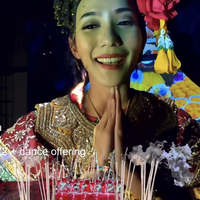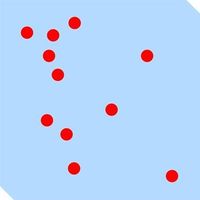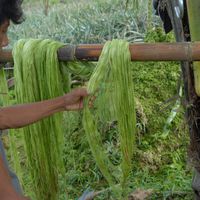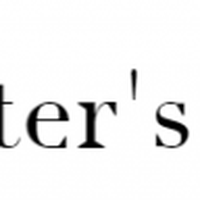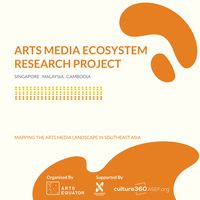Cultivating Arts Writing Ecosystems: Criticality and Creativity amidst Necessity
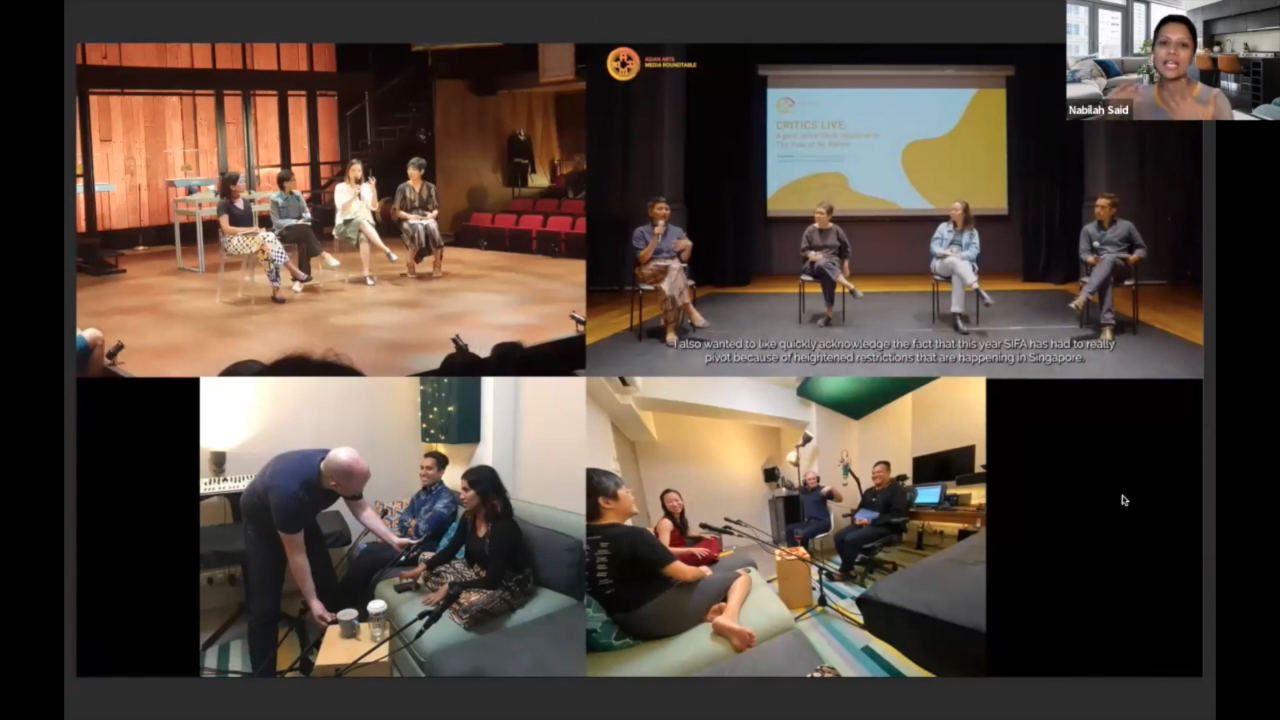
Personal narratives on professional pathways to becoming arts writers in four Asian countries were the departure point for the rich discussion at “Critical Writing Training: Models, Methods and Pitfalls,” a panel session held on 15th September in conjunction with the “Asian Art Media Roundtable (AAMR).” AAMR was co-organised by Karakoa and ArtsEquator as part of Creators Cradle Circuit 2021, in partnership with BUoY Festival in Tokyo.
Themes of lineage and knowledge transmission framed the presentations by Pristine de Leon (Philippines); Nabilah Said (Singapore); Hiroyuki Takahashi (Japan); and Carmen Nge (Malaysia). Guiding them was the question: how does one train to become an arts writer, and then participate in preparing others to become arts writers in their own right? At the beginning of the session, moderator Corrie Tan acknowledged its place in a world where there are concrete differentials between countries, in terms of knowledge networks and training infrastructure relevant to the panel topic.
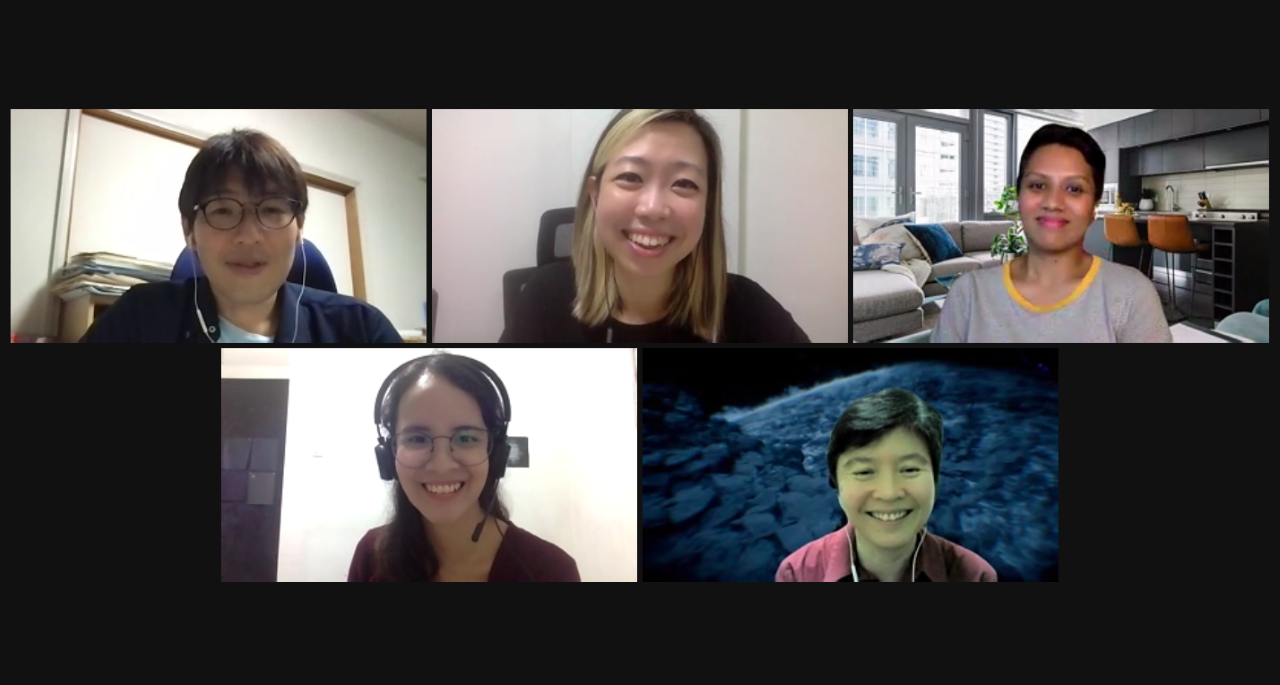
A key learning was that there is no one pathway to becoming an arts writer. The world of arts writing can absorb perspectives from a range of disciplines, and journalism was especially apparent in the presentations by Pristine and Nabilah. Their gateway to arts writing were early career positions at Hinge Inquirer Publications and The Straits Times, respectively. There, they found their way to reviewing arts events and interviewing artists, with sustained mentorship by dedicated superiors making up for any lack of formal academic training in the arts.
What stood out was the fact that Pristine and Nabilah were accorded the time to immerse themselves in their new craft. Pristine recounted extended encounters with artists at their studios or on jeepney rides. Nabilah spoke about repeated assignments to file review articles, which forced her to assume a voice of authority although it was unnerving to her as a junior writer.
The shared reflections provided a more holistic perspective on journalism lineages in arts writing. Last year, cultural journalist Sharmilla Ganesan, my mentor in the Cendana-Aswara Arts Writing Mentorship programme, shared that working for a major daily newspaper taught her to write about the arts in a more accessible language and economise on words at the same time. Interestingly, Nabilah shared that in her experience, the need to be economical and assume a voice of authority in media risked creating a sense of writing against a checklist or the templatisation of reviews, if you will. Supplementing this was an observation by Carmen, who teaches at the Faculty of Creative Industries, Universiti Tunku Abdul Rahman (UTAR). She observed that if taught too prescriptively, core journalism concepts such as the 5W’s and 1H can end up producing standard, unimaginative stories. According to Carmen, this can also limit a writer’s ability to question, which she considers one of the defining strengths of the craft in today’s world, where learning systems are increasingly visually-driven.
When looked at together, the experiences of the two career academics on the panel – Hiroyuki and Carmen – offered interesting possibilities in teaching a central tenet of arts writing: critical thinking.
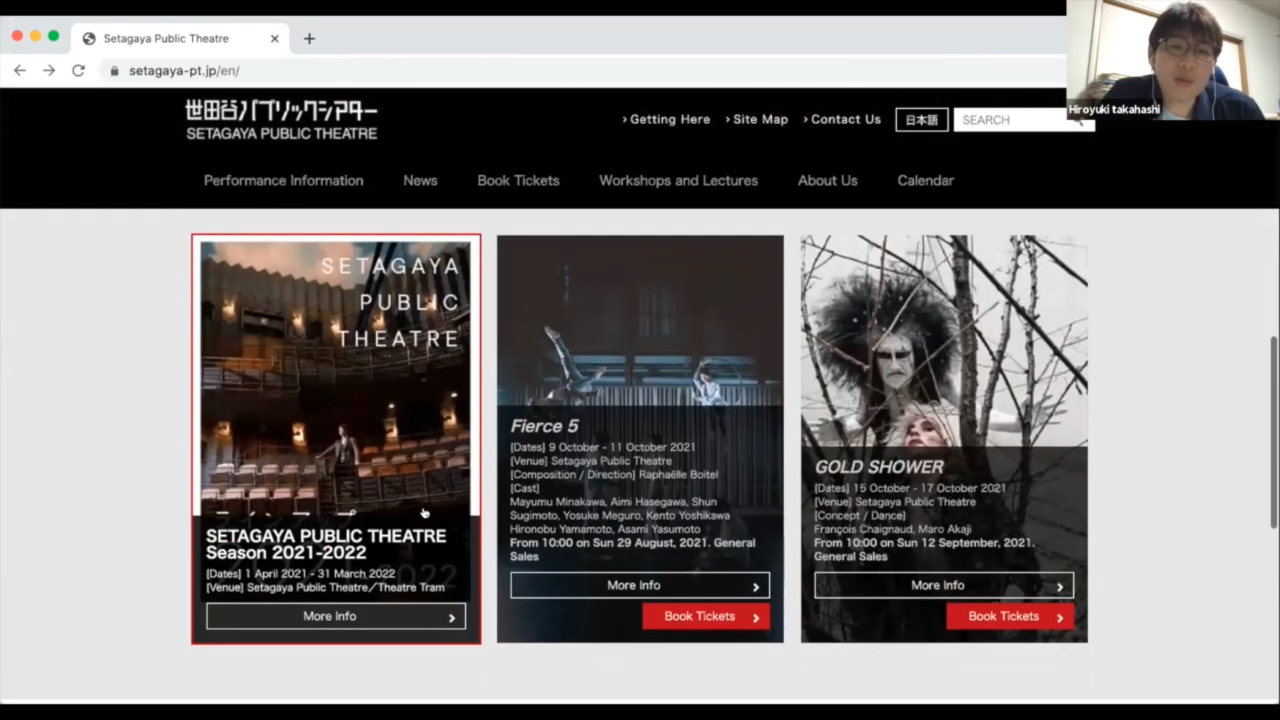
Hiroyuki’s approach can be seen as an intentional departure from the conventions of skills training. Teaching theatre criticism on a part-time basis at the Theatre Academy of Za-Koenji, Setagaya Public Theatre in Tokyo’s Setagaya City, Hiroyuki forsook the teaching of technique or skills in arts criticism or academic writing. Instead, he made it clear that his role was to provide opportunities and platforms for discussion and debate. Pleased with the programme’s ability to reach participants beyond the hallowed halls of academia, Hiroyuki shared insights on the generational divide. Among his students are young postgraduate students and senior citizens. Sometimes, Hiroyuki finds that the senior citizens write better critique essays than the students. Other times, the senior citizens struggle to understand what the students have written. One can imagine the creative tension that emerges in such an environment, and the debates it triggers in finding a common ground.
Currently teaching at the Fine Arts Department of the Ateneo de Manila University, Pristine observed that her teaching style tends to chip away at presumed notions of what it means to be an arts critic. She teaches her students on the critic’s positionality, the need to question assumptions that critics must always be ‘fighting’ against artists, or that they aim for unity in perspective. Critics often disagree among themselves, she pointed out.
The challenges of teaching arts writing – an immersive craft that is best learnt by mulling – in the compressed academic calendar system were shared by Nabilah and Carmen. Apart from the insufficient time accorded, Nabilah observes a perceptible gap in academic theory too, which then impels her to design her own modules. Nabilah currently teaches a four-week arts criticism module at LASALLE College of the Arts.
For Carmen, the lack of time for comprehensive contextual learning is a lamentable loss. She finds that her digital native students often know, through osmosis, a lot more about the arts in bigger culturally-exporting countries compared to Malaysia. And sometimes, this knowledge is of little help in their studies of their home country’s arts and culture.
In parting, arts writing can be pursued via different pathways, although it stands to benefit from the drive to critically engage with the culture, history and context of the works reviewed. The learning platforms do not even have to be concentrated in formal workplace settings anymore, a pertinent point given shrinking media coverage of the arts. The doors are wide open to consider informal, smaller scale and diffuse lineages too. 
The panel Critical Writing Training took place on Wednesday 15 Sep 2021, as part of Asian Arts Media Roundtable @ Creators Creators Cradle Circuit 2021 in partnership with BUoY Festival in Tokyo. It is co-organised by Karakoa and ArtsEquator. The Asian Arts Media Roundtable (AAMR), a meeting of arts writers from Southeast Asia, East Asia and Asia-Pacific, was founded by ArtsEquator in 2019.
Adriana Nordin Manan is a writer, playwright, translator, and researcher. Born, raised, and based in Kuala Lumpur, she is fascinated by the expanse of stories as mirrors to society and monuments to the human condition. In 2019, her translation of “Pengap” by Lokman Hakim was shortlisted for The Commonwealth Short Story Prize, a first for Malay language submissions. She is currently working on her first full-length play, with themes of cultural clashes, diaspora, and family conflict. Adriana speaks Malay, English, and Spanish.
Similar content
posted on
28 Aug 2017
28 Nov 2016
deadline
18 Jul 2016
from - to
23 May 2019 - 25 May 2019
05 Mar 2021

